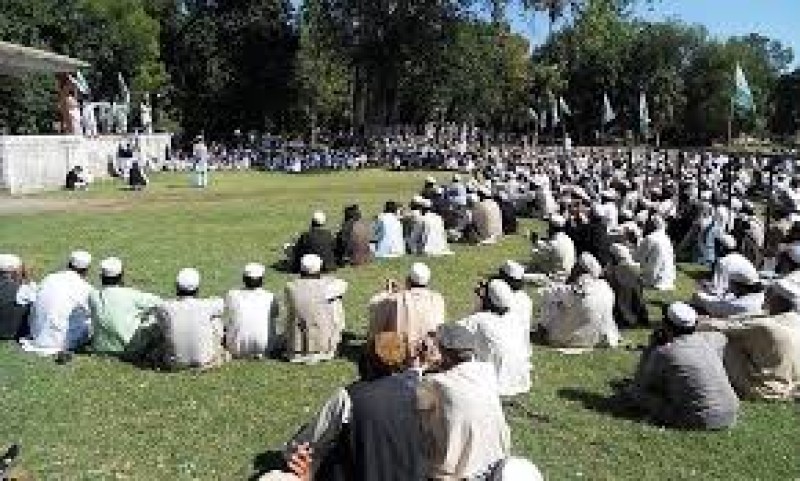The Jirga System in Peshawar: An Age-Old Tradition of Conflict Resolution

Introduction:
The Jirga system, an age-old method of conflict resolution and community governance, remains an integral part of Peshawar’s socio-cultural fabric. Rooted in Pashtun traditions, the Jirga system has been instrumental in maintaining social order and delivering justice in Peshawar and the surrounding regions for centuries. This traditional institution operates alongside the formal legal system, offering a unique blend of customary and contemporary justice.
Historical Background
1. Origins of the Jirga System:
The Jirga system traces its origins to ancient tribal traditions of the Pashtun people. Historically, it has been used to resolve disputes, make communal decisions, and maintain peace within the tribe. The word “Jirga” itself means “council” or “assembly,” reflecting its function as a forum for discussion and decision-making.
2. Role in Pashtun Society:
In Pashtun society, the Jirga holds significant authority and respect. It operates on principles of collective decision-making and consensus, embodying the values of justice, equality, and community solidarity. Elders and respected members of the community typically lead the Jirga, guiding discussions and ensuring fair resolutions.
Structure and Functioning
1. Composition of the Jirga:
A Jirga is usually composed of elders and influential figures within the community, known for their wisdom, experience, and impartiality. These members are selected based on their reputation and ability to mediate conflicts effectively. In Peshawar, the composition of a Jirga can vary depending on the nature and gravity of the issue at hand.
2. Procedures and Practices:
The Jirga process begins with the convening of the assembly, where disputing parties present their cases. Discussions are held openly, allowing all members to voice their opinions. The Jirga members then deliberate to reach a consensus. The decisions are typically binding, and parties are expected to comply with the rulings.
3. Types of Jirgas:
There are different types of Jirgas based on their scope and function:
- Local Jirgas: Handle disputes within a village or neighborhood.
- Regional Jirgas: Address issues affecting multiple villages or a larger area.
- Loya Jirgas: Large assemblies convened for significant matters, such as political decisions or major conflicts.
Positive Aspects
1. Accessibility and Timeliness:
One of the primary advantages of the Jirga system is its accessibility. It provides a platform for swift and local resolution of disputes, often at a lower cost and with less bureaucracy than the formal legal system. In Peshawar, this is particularly beneficial in rural and remote areas where access to formal judicial institutions may be limited.
2. Cultural Relevance:
The Jirga system is deeply rooted in the cultural and social norms of the Pashtun community. Its procedures and decisions are based on local customs and traditions, making it a culturally relevant and accepted form of justice. This cultural alignment enhances its legitimacy and effectiveness.
3. Social Cohesion:
By emphasizing reconciliation and community harmony, the Jirga system promotes social cohesion. It encourages disputing parties to find mutually acceptable solutions, often involving restitution or apologies, rather than punitive measures. This approach helps maintain long-term peace and relationships within the community.
Negative Aspects
1. Potential for Bias and Injustice:
Despite its strengths, the Jirga system can be susceptible to bias and partiality. The influence of powerful individuals within the community can sway decisions, leading to potential injustices. In Peshawar, there have been instances where marginalized groups, such as women and lower socioeconomic classes, have not received fair treatment.
2. Lack of Legal Oversight:
The informal nature of the Jirga system means that its decisions are not subject to legal oversight or appeal. This lack of accountability can lead to human rights violations and unfair practices. In some cases, the decisions made by Jirgas have conflicted with national laws and international human rights standards.
3. Inconsistency in Decisions:
Since Jirgas are based on local customs and the discretion of elders, there can be inconsistency in the rulings. Different Jirgas may arrive at different decisions for similar cases, leading to unpredictability and potential dissatisfaction among parties.
Modern Integration and Challenges
1. Coexistence with Formal Legal System:
In modern Peshawar, the Jirga system coexists with the formal legal system. While the Jirga handles many local disputes, serious criminal cases and legal matters are referred to the formal judiciary. Efforts are being made to integrate the positive aspects of both systems to provide comprehensive justice.
2. Reforms and Regulation:
There have been calls for reforms to regulate the Jirga system and ensure it operates within the framework of national and international legal standards. These reforms aim to preserve the cultural significance of the Jirga while addressing issues of bias, accountability, and human rights.
Conclusion:
The Jirga system in Peshawar is a testament to the enduring strength of traditional conflict resolution methods. While it offers numerous benefits, such as accessibility, cultural relevance, and social cohesion, it also faces challenges related to bias, lack of oversight, and inconsistency. Balancing the strengths of the Jirga with the formal legal system through thoughtful reforms and regulation can enhance justice and harmony in Peshawar. As the city continues to evolve, the Jirga system remains a vital part of its socio-cultural identity, reflecting the resilience and adaptability of Pashtun traditions.

